Socializing Your Pup to Get Along With the World
By Michele Welton, Dog Trainer, Breed Selection Consultant, Author of 15 Dog Books
You've probably been told that you need to take your pup out of the house and socialize him with other people, other dogs, and other environments.
That's true. But the word socialize can mean different things to different people.
The traditional meaning of socialization
Many owners define socialization as making their pup more social, more friendly toward people they encounter on their walks.
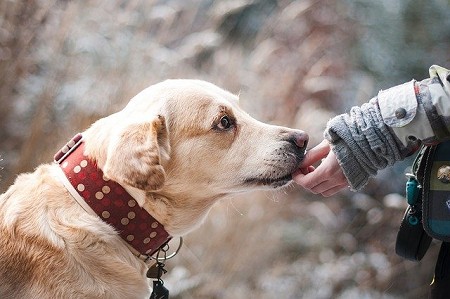
You can encourage your dog to be friendly and trusting and to accept treats and petting from a stranger. Just be aware that there are some downsides to doing this AND that not all dogs are comfortable doing this.
To accomplish this, you might sit on a bench at the park or at a shopping center, and when someone passes by, you encourage the person to pet your pup and to give him a treat.
Important! If you have a small dog, ask the person to turn their hand so their palm is facing UP and then to rub their fingers against the dog's throat and chest, rather than patting his head. Demonstrate with your own hand.
Small dogs (quite understandably) hate giant hands descending from the sky onto their tiny heads. If people try to pat them on the head, they may become both hand-shy and head-shy.
So that's the traditional method of socialization. Are there any downsides? Anything negative that might happen if you teach your pup that strangers are a source of positive attention, petting, and treats?
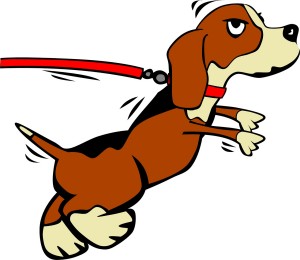
Extroverted dogs, when actively encouraged to be friendly, might ignore you and seek out strangers for petting and treats.
Well, if your pup is an outgoing extrovert, he might begin scanning for people during every walk. He might get excited when he sees someone, eagerly whining and pulling on the leash. Which means he is less focused on YOU. And all those words you've taught him, the ones he obeys so well in your house and yard? When he gets distracted by other people, he probably pays less attention to your words.
I have one dog like that. She was VERY outgoing as a puppy, so I socialized her in the traditional way, encouraging her to go to strangers. And it makes both stranger and dog happy! But sure enough, when she's greeting other people, she does pay a lot less attention to me.
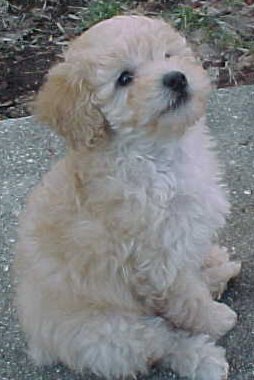
Miniature Poodle pup
But that's okay with me because she's a small gentle dog, easy to manage even when she does get distracted. She doesn't jump on them. She doesn't bark at them. But with her winsome smile and rapid-fire tail wags, she has this knack for making other people feel good when she greets them as her long-lost friend. Maybe our toxic, fractured world needs more dogs like Buffy!
Also, I have a trick up my sleeve when I want her to stop paying attention to other people. I begin a structured walk where she must pay attention to me only. She has learned that when I announce a structured walk, meet-and-greet time is over and she needs to focus on me again. She's such a good girl!
A different meaning of socialization
I also have dogs who are more introverted, reserved, standoffish. These dogs don't want to greet a stranger as a long-lost friend. In fact, they would prefer for strangers to just leave them alone. Introverted dogs should not be forced to interact with people they don't know – unless that person is a vet who needs to examine them. And all of my dogs have been taught to behave in the vet's office.
So here's a different kind of socialization:
You still take your pup to different social settings, such as the park, a shopping center, or downtown.
But you don't allow him to interact with anyone, and you don't allow anyone to interact with your pup.
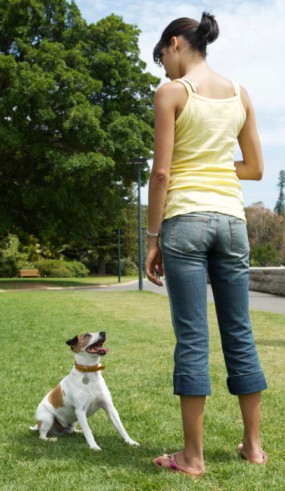
Get your dog accustomed to paying attention to you in public. This is a Jack Russell Terrier.
Instead, you work on all the words the pup knows so far ("Sit. Stay. Come.") and you use treats plus leash guidance to make sure he pays attention to you and ignores everyone else.
With this type of socialization, your goal is NOT to make your dog more "outgoing." Your goal is to simply teach him to behave (to pay attention, no barking, jumping, lunging) in distracting social settings, such as:
- a busy sidewalk with pedestrians
- a shopping mall
- a pasture or country road near sheep or cows or horses
- a suburban neighborhood with kids riding bicycles and dogs barking behind fences
- a park where children are kicking a soccer ball while their parents cheer and applaud
In these social settings, you want your pup to focus on you and to simply "share space" with everyone else. You want him to view everything else as harmless, meaningless background noise. Because you are the only one he interacts with, that means you are the only one who gives him treats – never a stranger.
This kind of socialization is practiced by many trainers of world-class competition dogs, as well as trainers of police and service dogs.
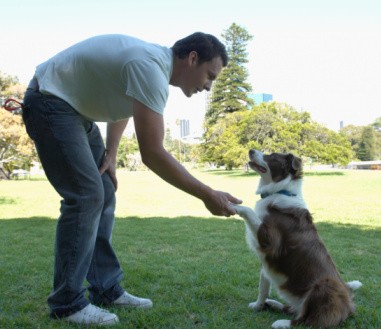
This owner is teaching his pup, "Pay attention to me. Ignore everyone passing by. Focus on me. Good dog!"
These trainers take their pup everywhere, but they don't allow anyone to invade his space or try to pet him. If a stranger approaches, the trainer whips out a tasty treat and gets the dog focused on the trainer rather than the stranger. The pup learns that when he sees strangers, his owner will give him treats. Seeing a stranger then becomes a GOOD thing to the pup... but not someone to interact with.
And if a stranger tries to pet the dog anyway? The trainer says, "Excuse me, ma'am, he's in training right now, he's going to be a service dog (harmless white lie) so I'm teaching him to not get distracted by people. It would be so helpful to us if you don't pet him right now. I really appreciate it, thank you!"
Risks of socializing with strangers
We've already talked about two risks of letting your dog interact with strangers:
- An extroverted pup might start paying more attention to other people than to you.
- An introverted pup may feel anxious or uncomfortable.
There's also a third risk:
- A stranger might do something stupid, startling, or scary, which can mess up the pup's temperament.
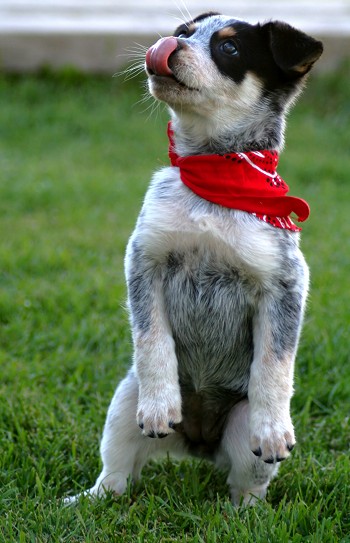
Just one stranger doing something stupid can ruin an impressionable young dog. This is an Australian Cattle Dog, aka Blue Heeler.
Sometimes all it takes is one negative experience for a very sensitive pup to become wary of all strangers, or at least strangers who resemble the one who startled him.
Then the pup may start tucking his tail and avoiding people, or threatening them with blustery barks to make them go away.
Owners often leap to the conclusion that their rescue dog who is fearful or aggressive toward people "must have been abused". But it's far more common that he was simply startled or handled inappropriately at an impressionable age.
What might a stranger do that could negatively affect your dog? He might rush in and invade the pup's space. He might try to hug or kiss the pup. He might try to pick the pup up. He might enthusiastically pat the pup (thump-thump!) on the head. He might gesture vigorously with his arms or break into a loud rollicking laugh. He might make playful woofing sounds.
People do all sorts of daft things around dogs.
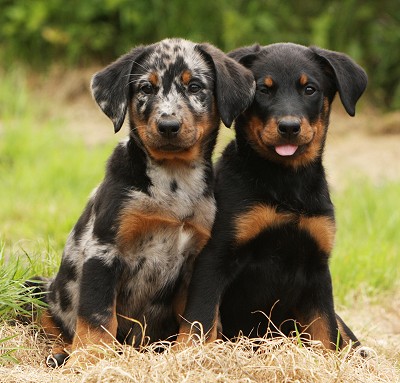
Beauceron pups (yes, they're so handsome! but not a breed for inexperienced or casual owners)
To avoid some bozo wrecking your pup, you might decide to take him only to places where you actually know the people and you trust them to carefully follow your instructions. Assuming you know such places or people!
Or you might decide that you won't allow any stranger to interact with your dog when you're out with him in public. Now, that doesn't mean your pup never gets to meet or play with anyone. In your own home and yard, your friends and relatives who visit can certainly pet and play with your pup, if he enjoys that.
And whether he's extroverted or introverted, he still must accept handling whenever you say so. How else could a veterinarian, groomer, pet sitter, or boarding kennel be able to take care of him?
You've taught him to accept handling, right? You've taught him how to sit and stand quietly while you touch his ears, mouth, paws, etc. Now it's time to ask a trusted friend to do the same things with him, while you direct and guide the pup into the right positions.
As responsible guardians, we must teach our dogs how to be calm and accepting in the real world that we all live in.
Be a good role model for your dog.
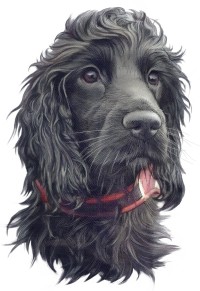 Whether you decide to let your pup interact with strangers or not, you should still interact with strangers.
Whether you decide to let your pup interact with strangers or not, you should still interact with strangers.
For example, with your dog on leash, smile and say "Hello" to passersby. Ask them what time it is. Comment on the weather. Compliment them on their pretty sweater or funny t-shirt.
Why? Because you want your pup to observe that you're happy to see people.
If you (the leader) are relaxed and confident, your pup (the follower) will conclude that the world is nothing to worry about. If you're tense and anxious, he is more likely to be, too.
Loosen your pup's leash!
One of the most common mistakes owners make is holding their pup on a tight leash around other people or other dogs.
- A taut leash can make dogs more aggressive. When your pup can feel your presence (literally) through the leash, he feels bolder about threatening another person or dog because you're there to "back him up." The tight leash is his umbilical cord.
- A taut leash can make anxious dogs more anxious. The pup feels trapped by the tight leash, can't escape, which makes him more fearful.
- Finally, a taut leash communicates to your dog that you're concerned about the situation – which makes him concerned about the situation.
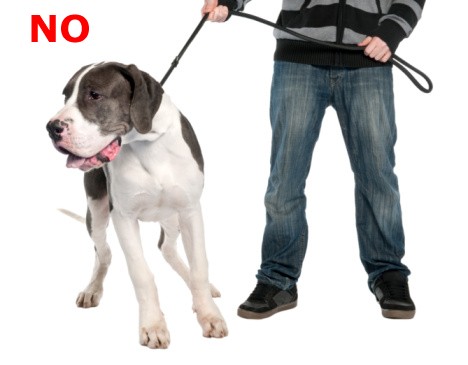
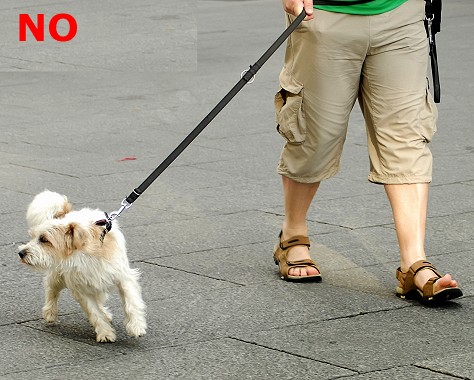
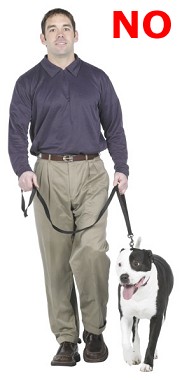
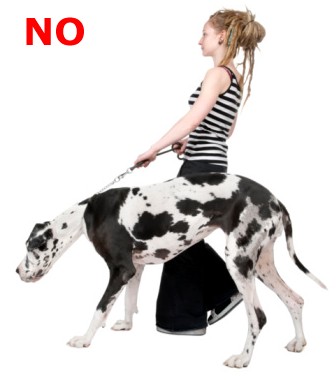
Don't hold your pup tightly beside you. Instead, use the loose leash techniques from my article on walking properly on leash. See the lovely Jack Russell Terrier (below) on a loose leash?
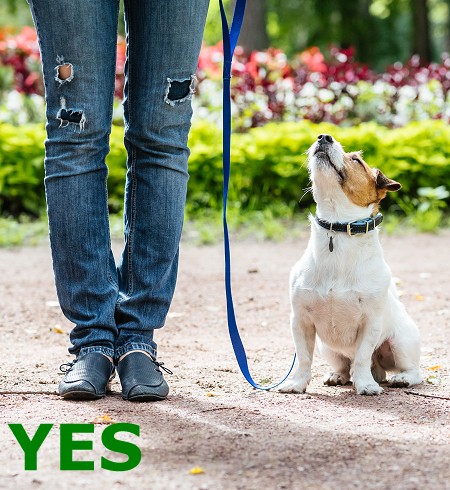
Correct inappropriate behavior.
When you take your pup around other people or other dogs, the most important message to convey to him is this:
"You must accept other people and other dogs. You don't need to like them. If you have negative feelings toward them, fine, but you cannot express negative feelings through inappropriate behavior."
Really, it's that simple.
If your pup dislikes strangers or other dogs, having those feelings is fine. But he needs to keep them to himself.
He may not:
- repeatedly growl, bark, or woof suspiciously at them
- lunge toward anyone
- bolt fearfully to the end of the leash, trying to escape
- stand up on his hind legs, pawing at you to be picked up
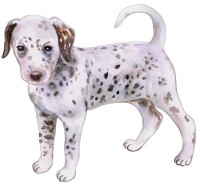 A dog who is doing any of those things is not practicing calmness and is not trusting you, the leader, to handle the situation. That's a no-no, so use whichever corrective techniques work for your particular pup to get him standing quietly beside you on a loose leash.
A dog who is doing any of those things is not practicing calmness and is not trusting you, the leader, to handle the situation. That's a no-no, so use whichever corrective techniques work for your particular pup to get him standing quietly beside you on a loose leash.
If you can't control your dog with a regular buckle collar, try one of the alternative collars I recommend in my article on walking properly on leash.
Don't, don't, don't....
Don't reassure or pet a pup who is displaying inappropriate behavior. This is a huge mistake that owners make.
Don't say, in a soothing tone, "Lacey, it's okay, I'm here, nobody's gonna hurt you." It might seem like a perfectly natural thing to say. We reassure our toddler like this when he skins his knee. That's what humans do, and other humans respond by feeling safe and reassured.
Unfortunately, CANINES interpret a soothing voice much differently! A soothing voice is interpreted by your pup as positive reinforcement of whatever behavior he's exhibiting at the moment... in this case, his aggressive or fearful behavior.
You really don't want to reinforce that, do you?
Remember, positive reinforcement is a reward, and dogs repeat behaviors that bring rewards. If you reward nervous or aggressive behavior with soothing (or petting or treats), you're going to see more nervous or aggressive behavior. Not less.
In a stressful situation, dogs don't need petting or comforting or treats. They need direction from you – a constructive thumbs-up or thumbs-down of their behavior – not their feelings. Read more about aggression/reactivity and how to deal with it.
If your pup is fearful rather than aggressive...
... should you correct that, too? Yes. A dog who is allowed to practice fearful behavior may escalate to where he starts seeing demons everywhere. Shyness can be a serious behavior problem, especially in large breeds who can do a lot of damage if they become startled and defensive and lash out at an innocent person.
So how do you correct fearful behavior? Give the pup something else to focus on ("Sit" or "Lie down" or "Heel") and calmly correct any misbehaviors such as pulling on the leash, growling, or barking. Remember not to reward with soothing words and stroking, or you'll increase the fearfulness and effectively push what was a minor concern into a full-blown phobia.
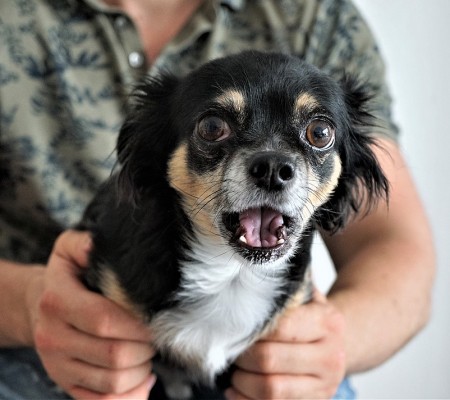
This might surprise you, but in my experience, most dogs displaying nervous or aggressive or neurotic behavior have been made that way by their unsuspecting owner who enabled and supported the pup's anxiety by....
- reassuring, petting, or giving treats when he acts anxious.
- tightening his leash to hold him close to you.
- picking him up (unless an off-leash dog is running straight toward you!)
Again, those soothing responses simply encourage a dog to repeat the anxious behavior that resulted in petting and fondling. Remember, in dogs, only reward what you want repeated.
Socializing with other dogs
Here we run into the same basic issues as socializing with strangers.
- Are you trying to make your pup more of a social butterfly with other dogs?
- Or are you trying to teach him how to behave properly in a social setting that includes other dogs?
For most dogs, I favor Option 2. In my opinion, letting your pup sniff noses or play with other dogs that you don't know and can't control is very risky. It may take only one instance in which your pup is attacked by another dog for him to start acting aggressively or defensively toward other dogs for the rest of his life. His mentality becomes, "I'll get them before they get me."
When owners consult with me about these psychologically-scarred dogs, they usually say, mournfully, "It was just that one time. We had no idea the other dog would bite Benny like that."
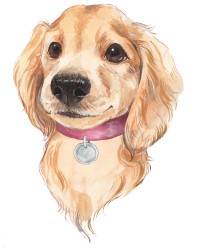 Dog parks and public dog beaches? Most of them are appalling. Owners stand around chatting, laughing, and talking/texting on their phones while their own dog's body language (or some other dog's body language) is flashing bright red warning signs that a fight might be imminent.
Dog parks and public dog beaches? Most of them are appalling. Owners stand around chatting, laughing, and talking/texting on their phones while their own dog's body language (or some other dog's body language) is flashing bright red warning signs that a fight might be imminent.
I don't put my dogs' lives in the hands of other owners who I can't trust to recognize or respond properly to canine body language. Most dogs at a dog park/beach don't even respond to the most basic "Come!" or "Leave it!" commands.
Your dog doesn't need to play with other dogs in order to have a long and happy life. He really doesn't. You and your family make perfectly fine substitutes for your pup's social needs.
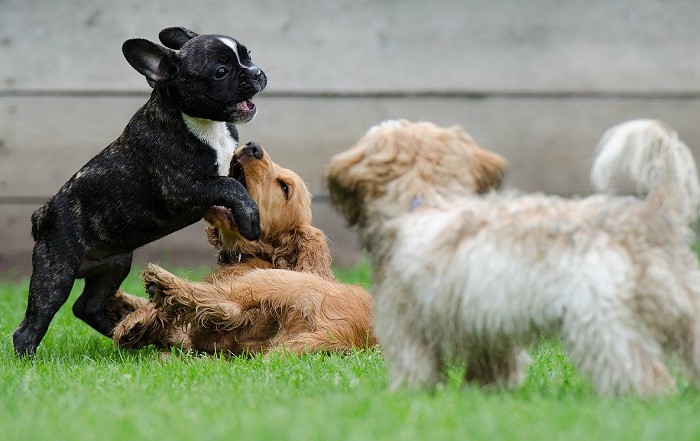
French Bulldog pup playing with a Cocker Spaniel pup, with a Lhasa Apso pup (I think... harder to tell with his back turned!) on the far right
Of course, if you know another dog/owner team very well, that dog might be a great choice to test for playtime compatibility with your own pup.
But it's much more important that your pup learns how to share space with other dogs without flipping out, and to pay attention to you even when other dogs happen to be nearby.
- other dogs being walked on a leash while you and your pup are also out for a walk.
- other dogs standing in their own yards and barking when you and your pup pass by.
- other dogs sitting beside their owner at the vet's office when you and your pup come in.
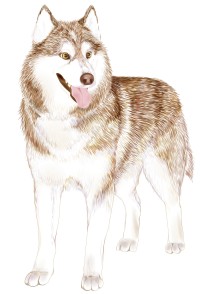 Those are the kinds of other dogs your pup needs to be comfortable around. And by "comfortable", I don't mean that he needs to play with them. He just needs to accept their presence calmly, without reacting or getting "triggered."
Those are the kinds of other dogs your pup needs to be comfortable around. And by "comfortable", I don't mean that he needs to play with them. He just needs to accept their presence calmly, without reacting or getting "triggered."
That means you calmly and methodically correct any excitable, aggressive, or fearful behavior on his part. He needs to stand or sit or lie down quietly beside you on a loose leash.
If an off-leash dog approaches you on a walk
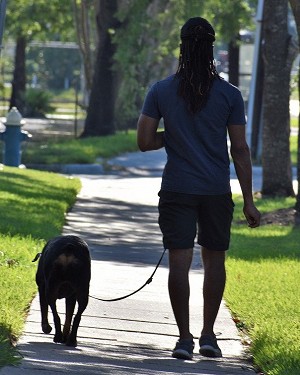
Look at that lovely loose leash!
One of the responsibilities of a leader is to protect followers. If you have a dog that lunges and barks at other dogs, often it's because he feels insecure and leaderless. He thinks HE needs to be the one to handle potential threats.
That's a leadership failure on the owner's part.
In contrast, if your pup sees that YOU will step between him and an approaching dog, he will eventually become more likely to "leave the other dog up to you," the leader, to deal with.
So when you and your pup go for a walk, especially in an area where you know other dogs run loose, take a sturdy walking stick.
If an off-leash dog approaches you, pick up your pup if possible. If he's too big for that, step firmly between him and the approaching dog and use the leash to hold your pup behind you. Yes, this is an exception to my general advice NOT to hold your dog on a taut leash.
Now, if the loose dog was NOT actually approaching you, or if he wasn't loose but leashed, you would NOT hold your pup on a taut leash. On the contrary, you would correct any barking or lunging on your pup's part, and you would make sure his leash remained loose.
But with an off-leash dog actually approaching, you must protect your pup. Keep him behind you, brandish your stick at the other dog, order it to get lost. Drive it away by whacking it with the stick if necessary. And if there is a truly aggressive dog in your area, carry pepper spray and/or find different places to walk!
When your pup witnesses that YOU are the leader and protector, he will feel less pressure to do this himself.
Should dogs be allowed to sniff each other?
I would need to know the other dog very well. Because if my pup is a small, sensitive, or timid dog, a mistake here could have catastrophic consequences to his future attitude toward other dogs.
More dog fights ensue from sniffing noses and butts than at any other time.
This canine ritual is where crucial social signals are exchanged. Each dog uses subtle body language to say things such as:
- "I'm the boss!"
- "Oh yeah? Says who?"
- "I don't like the way you look or smell!"
- "I don't mean any harm, please don't hurt me!"
Dogs can carry on quite a sophisticated conversation using the positioning of their head, ears, and tail, the tension of their muscles, the "hardness" or "softness" of their facial expression.
When this exchange communicates a pecking order that both dogs agree with, everything will probably be fine. But if that order is in doubt, a fight may ensue, either immediately or soon after.
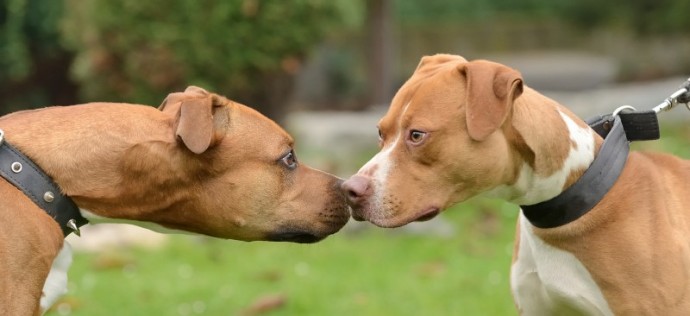
Here's how dog fights start... Allow two dogs to sniff noses and lock eyes, while holding them back with tight leashes. Novice dog owners make this mistake over and over again. These two are Pit Bulls, but could be any breed.
The chances of a dog fight increase markedly when owners hold their dogs on tight leashes and let them sniff noses. Tight leashes lead to all kinds of behavior problems in dogs.
Even if an owner assures you that his dog is "good" with other dogs...
Take it with a grain of salt. Dog owners are always assuring people of their dog's "friendliness." Just ask any (bitten) vet, groomer, or mail carrier how many times he or she has been told, "Oh, my dog would never bite."
Sad to say, many owners know little or nothing about their own dog. Even worse, they have little or no control over its behavior.
Should you allow your small dog to play with a larger dog?
I don't. A larger dog can accidentally hurt a small dog simply by jumping up and down. Even a friendly head butt or playful pawing can harm or frighten a smaller dog.
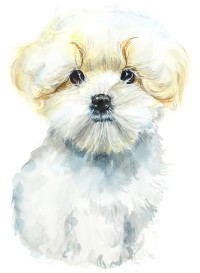 And there is the prey instinct to think about.
And there is the prey instinct to think about.
I have been the unhappy eyewitness to horrifying spectacles in which a large dog suddenly grabbed, shook, and seriously injured (and in one tragic case, killed) a smaller one.
The speed with which it happens is unbelievable.
The problem is that larger dogs often view toy dogs as prey. A sudden movement, such as your toy dog pouncing on a leaf, can trigger chasing instincts even in a nice larger dog who means well. He can seize your little one before he even thinks about what he is doing – before you have time to move or draw a breath.
It has happened time and time again.
For safety's sake, if you own a small dog, assume that:
- Other owners don't understand the prey instinct.
- The efforts of other owners to control and restrain their dog may be slow, weak, and ineffective.
You want your dog to be calm and confident in the world
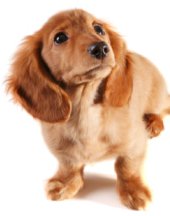
This poor Dachshund is showing stressed body language. Eyes open wide, furrowed brow, pursed lips? Also the base of his ears pulled down low? These are mild signs of anxiety.
You want your dog to react calmly to sights and sounds in the world.
Unsocialized dogs often develop fears and phobias. I knew a Beagle who freaked out whenever his owner opened an umbrella.
I watched a Doberman refuse to walk across a tile floor. Apparently he didn't like the sound of his toenails clicking on the hard surface.
I've known dogs who won't go up or down stairs... or who will go up but not down.... or down but not up.
And what about dogs who pitch a fit when the vacuum cleaner turns on? No, this is not "normal" – none of my many, many dogs have ever been aggressive toward, or fearful of, the vacuum cleaner. It's absurd.
Fears and phobias are typically created and/or enabled by owners.
Fear of thunder. Fear of fireworks. Fear of sirens. Fear of mailboxes. (Mailboxes? Yep.)
Fears are stressful, and as we all know, stress is bad for health. Socialization takes away fears and stresses so your dog is not only happier, but also healthier. You can socialize your dog to be calm about what is happening in the world around him.
Socialize from puppyhood through adulthood
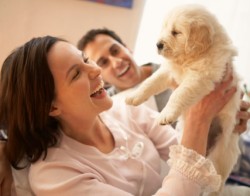
Start socializing your puppy at 7 weeks old. This is a Golden Retriever, one of the best and highly recommended family dogs.
PUPPY socialization (first six months) has the most dramatic effect on how a dog turns out.
In fact, here's something interesting....
The most critical period in a dog's life, psychologically, is the period from 7 weeks old to 16 weeks old.
Now, you wouldn't think those nine specific weeks could be so important. But scientific research shows that they are. Puppies should be introduced to strangers and other animals during this critical period.... but....
You have to pay attention to how Puppy reacts. If he is shy, or if he jumps all over everyone and mouths at their hands, you need to correct these behaviors before you invite more people over. Otherwise he could develop bad habits that last a lifetime.
Remember, this critical learning period (7-16 weeks old) comes only once in your dog's life. So you want to get it right.
But socialization doesn't END with puppyhood.
 ADOLESCENT socialization is next in importance.
ADOLESCENT socialization is next in importance.
Adolescence begins somewhere between 6 and 9 months old. It ends somewhere between 14 and 36 months old. (Smaller breeds start and stop at the earlier end of those ranges. And vice versa for larger breeds.)
Adolescence is an awkward time of change. A young dog's attitude toward the world may change from week to week – even from day to day!
This is also a difficult time for owners. Because up until then, Puppy may have been getting along famously with the world.
But during adolescence, when the hormones kick in, Puppy may change dramatically.
He may suddenly become suspicious or nervous around other people or other dogs. Or he may alternate between aggression and fearfulness.
Most owners respond to these fluctuations in ways that are actually counter-productive with dogs. Your responses, though well-meaning, can simply reinforce the spooky behavior.
To help your dog through this challenging period in his life, you should respond in the specific ways that match how dogs learn – with good routines, positive and negative consequences, and solid leadership.
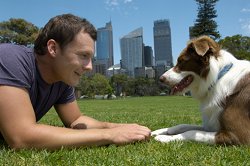
By adulthood, you may not be able to change how your dog feels about other people, other animals, or the world in general. But you can still change the way he acts toward them.
Finally, there is ADULT socialization. Suppose you have an adult dog who is acting inappropriately toward people or other animals. Obviously you can't time-travel to socialize him during those all-important puppyhood and adolescent stages.
But you can start now and work forward. It may be too late to change his feelings about other people or other animals – but socialization can still change his behaviors toward them.
In other words, you can teach your dog to remain calm and quiet, tolerating and accepting people and other animals even if he doesn't particularly like them. And that is a very worthy goal.
My best-selling books – now available FREE on my website
 Respect Training For Puppies: 30 seconds to a calm, polite, well-behaved puppy is for puppies 2 to 18 months old. Your puppy will learn the 21 skills that all family dogs need to know. Click here to read for free.
Respect Training For Puppies: 30 seconds to a calm, polite, well-behaved puppy is for puppies 2 to 18 months old. Your puppy will learn the 21 skills that all family dogs need to know. Click here to read for free. Teach Your Dog 100 English Words is a unique Vocabulary and Respect Training Program that will teach your adult dog to listen to you and do what you say. Click here to read for free.
Teach Your Dog 100 English Words is a unique Vocabulary and Respect Training Program that will teach your adult dog to listen to you and do what you say. Click here to read for free. 11 Things You Must Do Right To Keep Your Dog Healthy and Happy helps your dog live a longer, healthier life. Get my honest advice about all 11 Things before you bring home your new puppy, because some mistakes with early health care cannot be undone. Click here to read for free.
11 Things You Must Do Right To Keep Your Dog Healthy and Happy helps your dog live a longer, healthier life. Get my honest advice about all 11 Things before you bring home your new puppy, because some mistakes with early health care cannot be undone. Click here to read for free.
